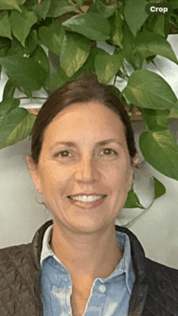 Dr. Ericson will focus her session on how “the disease is in the pathology”, as well as new methods of detection.
Dr. Ericson will focus her session on how “the disease is in the pathology”, as well as new methods of detection.
Stealth pathogens, such as Bartonella spp. and Borrelia burgdorferi can result in chronic and debilitating disease but can be challenging to diagnose and thus treatment may be delayed. These vector-borne stealth pathogens have evolved survival strategies to escape immune surveillance, antibiotic treatment and inadvertently escape detection. New methods to detect Lyme, Bartonellosis will be discussed at this speaker meeting.
Dr. Ericson joined the University of Minnesota’s department of dermatology in 1996 as part of the Clinical Research Division team. She is currently director of the Dermatology Imaging Center. Her interests lie in adapting imaging techniques such as single- and multi-photon laser scanning microscopy, second harmonic generation, correlative microscopy, TEM and SEM, live imaging, and super-resolution microscopy to help parse out mechanisms of disease with cutaneous manifestations.
“I have a broad background (15+ years) in examining, imaging and quantifying biomarkers in the skin and other organs using laser scanning microscopy and 3-dimensional analysis. I have successfully administered fruitful collaborative projects (including staffing, research protections, budgets, experimental plans) and produced several peer-reviewed publications from each project as well as funding. Based on my success with previous projects, I am aware of the importance of constructing a realistic research plan, timeline, and budget. Collaboration and innovation have been hallmarks of my research endeavors and afforded me the benefit of making contributions to a) understanding and treating cancer pain, b) identifying molecular targets of phytochemicals, comprehending the role of the peripheral nervous system in skin and hair biology, and c) recognizing the implications of Bartonellosis. I see a clear path towards recognizing, testing, and understanding this pathogen that is causing unprecedented health issues world-wide due to its stealth nature.”
RESEARCH
Of particular interest is the role of biofilms in chronic Bartonellosis and subsequent pathologies working with colleagues at the U of MN Twin Cities and Duluth campuses, North Carolina State University and UNICAMP in Brazil. Successful research collaborations include work with hair biology, the tick/mammal interface in Anaplasma spp., sun-screen development, natural products, and skin cancer, leukemia, breast cancer, sickle cell disease, and tumor pain.







